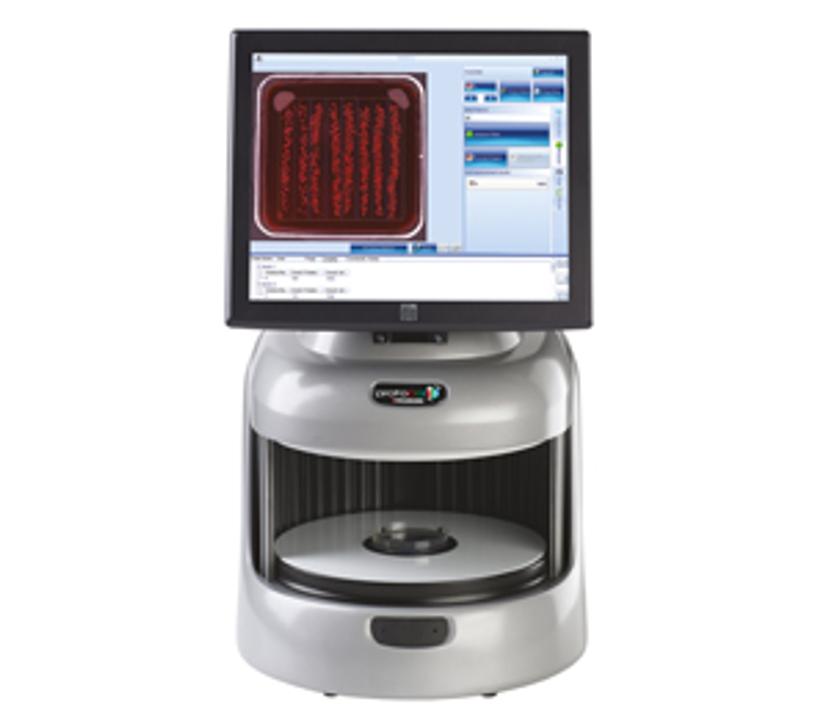Automated colony counting saves time and boosts accuracy
An alternative to manual colony counting, our case study illustrates how automatic colony counters enable higher throughput and better sensitivity
9 Mar 2020

Accurately counting bacterial colonies forms an integral part of a diverse range of experiments such as checking the safety of foods and pharmaceutical products as well as determining the efficacy of vaccines. With the assumption that each colony comes from a single microorganism, researchers dilute and plate the liquid culture directly onto agar plates, eventually determining the original microbial concentration by counting colony-forming units (CFUs) on each plate.
A staple in every microbiology research lab, obtaining accurate colony counts sets the foundation for an array of downstream experiments. Here, we discuss the challenges associated with manual counting, offer considerations for automating colony counts and find out how making the transition boosted productivity and experiment turnaround times significantly at a leading vaccine research facility.
Challenges with manual colony counting
Colony counting, often performed manually using the light box and pen method, demands a very high level of concentration by the microbiologist. As a way to manage this error-prone and time-consuming process, researchers resort to analyzing only parts of a plate to estimate whole plate numbers, introducing inaccuracies in the data.
To simplify the colony counting process, scientists often work with colored bacterial colonies by either using chromogenic media or by staining the colonies. Although easier to visualize compared to uncolored bacteria, obtaining accurate colored counts relies on the microbiologist having perfect color vision. As the brain interprets colors differently, there can be discrepancies in the colony counts when multiple scientists work on the same project.
Automated colony counters serve as a solution to these challenges, with the ability to detect and count colonies with greater accuracy and speed.
Automated colony counting: Speed and accuracy
Using automated colony counters enables researchers to improve count accuracy, eliminates user fatigue and saves time when analyzing large datasets. Modern colony counters, such as the ProtoCOL 3, can automatically read plates of up to 150mm diameter with the press of a button, offering as well as time saving, greater sensitivity and sustained reproducibility across experiments.
The data automatically transfers to a computer, further eliminating errors with manual data entry. As images and colony numbers get stored for every plate read, researchers can revisit data from a particular experiment at a later time. With all data reports being traceable, the ProtoCOL 3 offers a full audit trail, especially for GMP/GLP-compliant facilities.
Case study: Automating colony counts at a vaccine research facility
At a world-renowned vaccine facility, scientists test the efficacy of vaccines by mixing serum from the vaccinated patients with bacteria in a serum bactericidal assay. They then check whether or not the antibody in the patient’s serum killed the bacteria by counting surviving colonies on a plate. With hundreds of very small colonies to count by eye every single day, it was only feasible to count 16 plates in a day.
Benefits of automated colony counting
- Saves time
- Eliminates human errors; increases accuracy
- Improves sample throughput
- Higher sensitivity to smaller colonies
- Compatability with a wide range of plate types
- Automatic data transfer to digital files
- Stores images and data for future retrieval
- Traceable report generation for audit trails
To improve the throughput of the vaccine facility, the researchers decided to automate the colony counting process by using the ProtoCOL 3. With automation, productivity went up tenfold. As the ProtoCOL 3 can image up to six wells at a time, the researchers could now read up to 300 plates with six wells on each plate. The high-throughput nature of the workflow reduced assay-related costs and decreased the amount of plastic waste generated. One of the biggest benefits of using the ProtoCOL 3 is the time saved and the speed with which the results were obtained. Faster experiment turnarounds and speedy result reports can significantly enhance time-sensitive efforts, especially when designing new vaccines against serious diseases.
Validating an automated colony counter
Automating colony counts can bring precision, speed, accuracy and higher throughput to experiments in microbiological research. Before implementing automated colony counting into workflows, especially in GMP/GLP-compliant environments, scientists are advised to fully validate the automated colony counter to establish that the automated method is as accurate as expert manual counting. The validation protocol involves using multiple microbial species producing colonies of diverse shapes and sizes, requiring both translucent and opaque agar plates to cover all aspects of colony counting. Upon comparing the colony counts from manual and automated experiments for each plate, the validation process is successful when there are no statistically significant differences between the two counts.
Learn more about automating your colony counting and the features of the ProtoCOL 3 here>>

